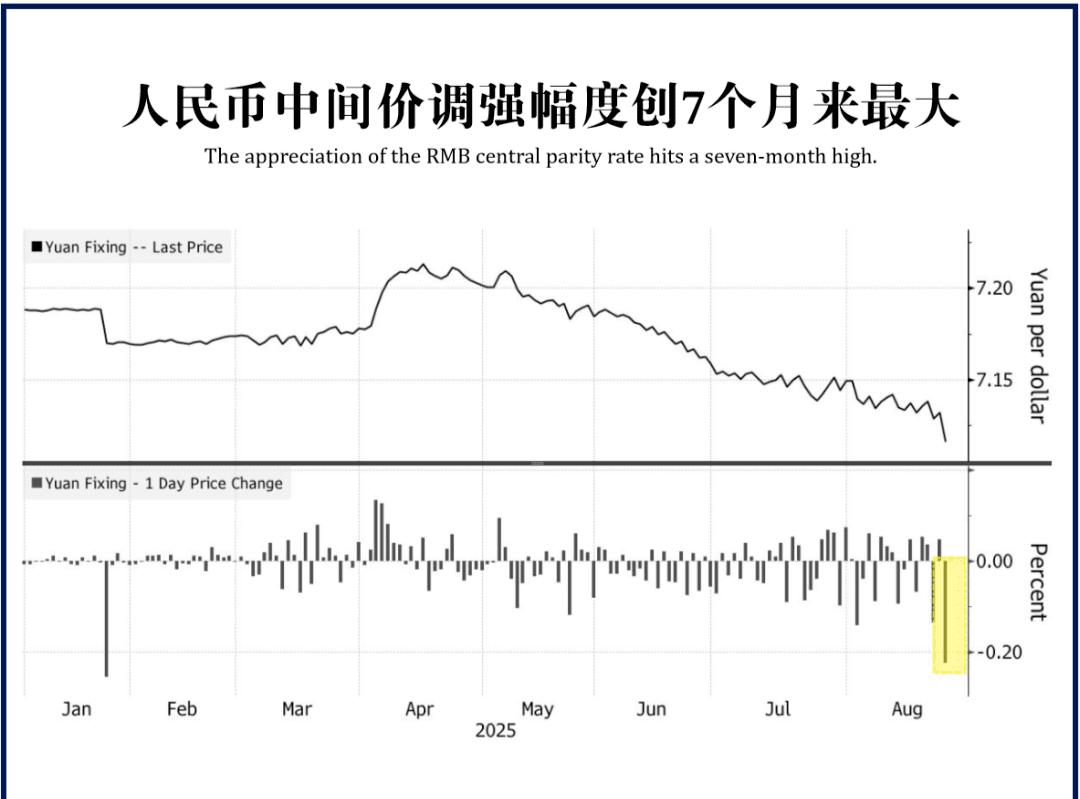
Today, China's central bank significantly strengthened the RMB against the dollar midpoint rate by 160 points (to 7.1161 yuan), again reaching a new high since last November, and the strengthening is the largest since January this year.
After the midpoint rate was announced, the offshore RMB promptly broke the 7.16 level, reaching a near one-month high—this trend is surprisingly aggressive.
First, the aforementioned news can easily be misinterpreted by the market. This is merely the response of the Chinese central bank to last Friday's plunge of the dollar, rather than a signal for a new round of appreciation, as today’s midpoint rate is significantly weaker than market expectations (today only 366 points stronger, compared to 553 points stronger last Friday). Do not overestimate the central bank's intentions.
Additionally, the RMB is also weaker against a basket of currencies (CFETS index) today. This means that the RMB is only strong against the dollar, not strong against all currencies. To truly stabilize below 7.15, it still depends on whether the dollar can continue to weaken.
Third, in the short term, the central bank may prefer a slightly strong RMB. On one hand, it can stabilize investors' confidence in the stock market, and foreign capital may gradually return; on the other hand, in the absence of a final agreement between China and the U.S., it sends a friendly signal, leaving no excuse for Trump.
Long-term stability at a strong level depends on two points:
The pace of U.S. interest rate cuts (Powell has hinted at rate cuts, but it is more like 'being forced to acknowledge the changing risks', rather than actively initiating an easing cycle).
The endogenous driving force of the Chinese economy (whether the stock market can stabilize, whether exports can rebound).
Final reminder: When the market forms a one-sided expectation that 'the RMB will only appreciate', it is often not far from a reversal. This has repeatedly occurred in the past few years: the more people shout 'breaking 7 will lead to a big rise', the more likely a turning point will appear.
